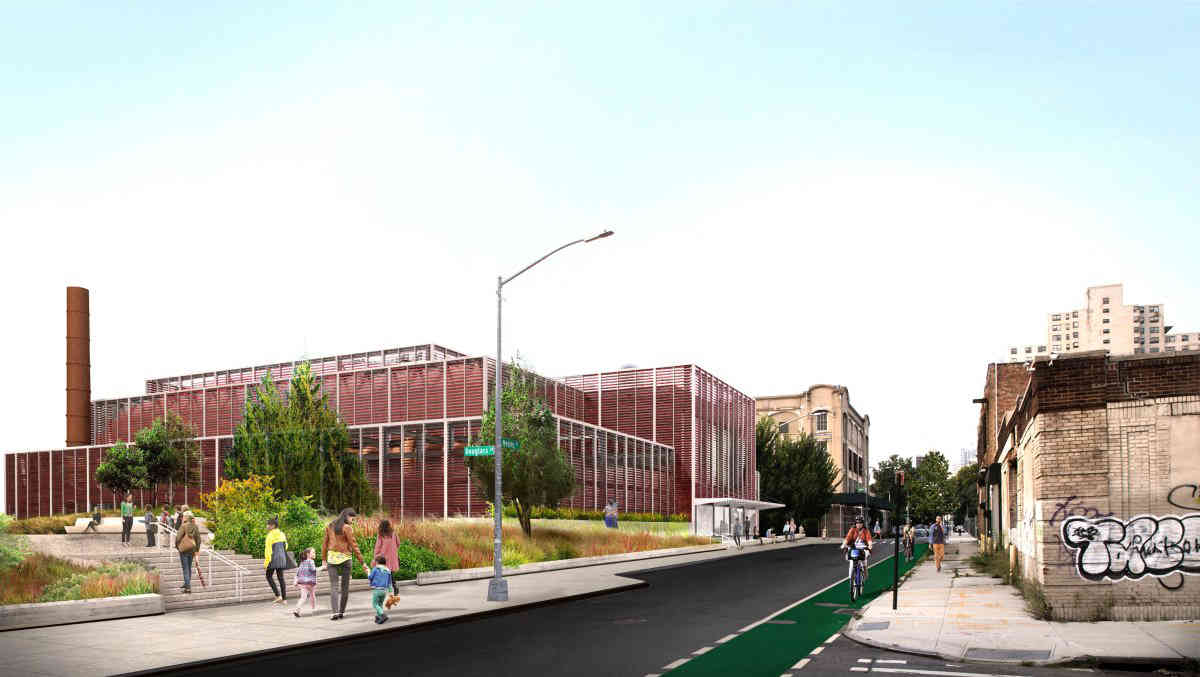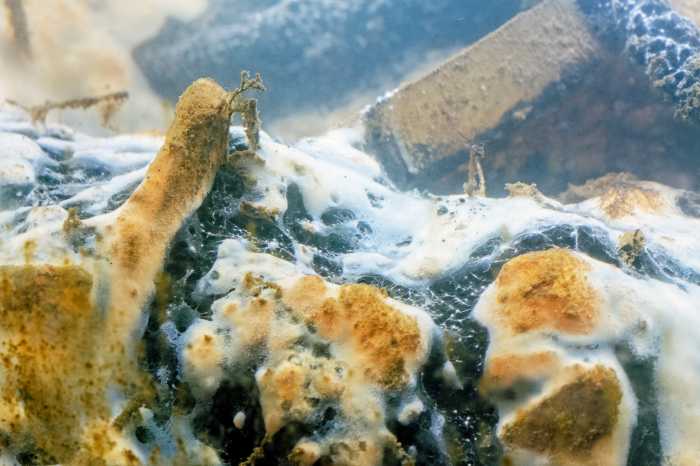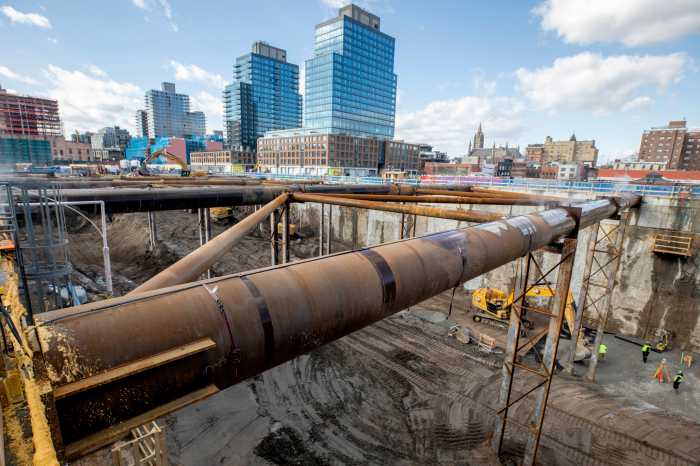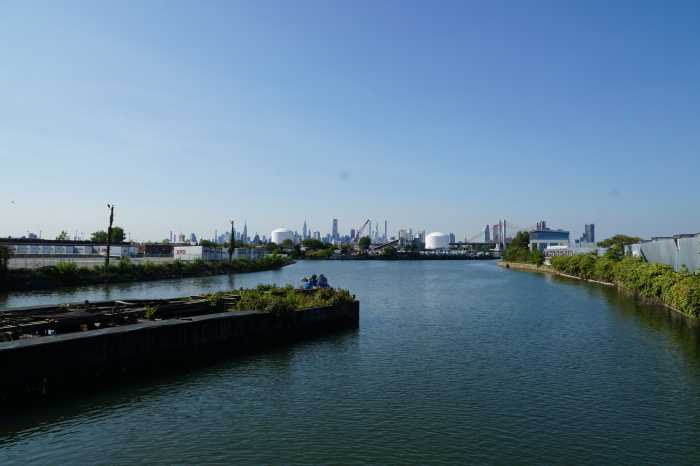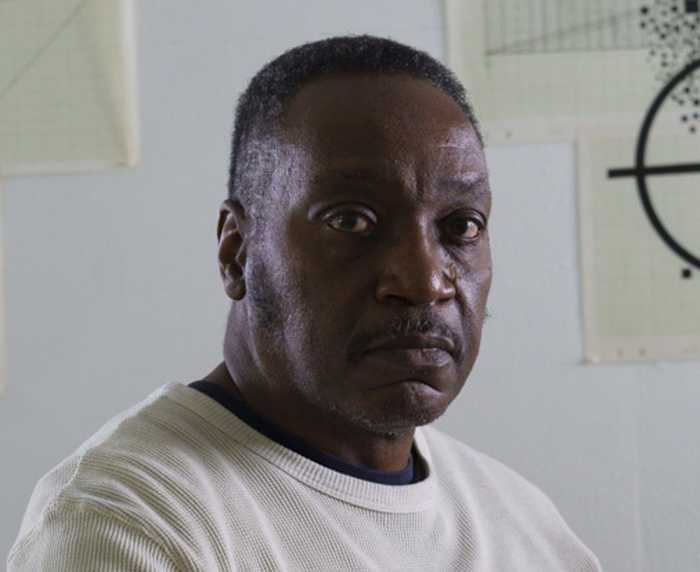It’s heading in the right direction!
Gowanusaurs cheered city engineers for scrapping a metallic-grey palette in favor of a yellow-brown bronze for the exterior of the new water-filtering headhouse they must build along the toxic Gowanus Canal as part of its federally led cleanup, after many residents feared the original design would stick out like a silvery sore thumb among the neighborhood’s brick warehouses.
But some locals want to see even more tweaks, according to a civic guru, who reviewed the latest plans for the building when officials from the city’s Department of Environmental Protection presented them to Community Board 6 earlier this month.
“The temperature of the room was receptive,” said Glenn Kelly, who leads CB6’s joint Parks and Recreation and Environmental Protection Committee. “Committee members see the design as an improvement, but despite that still had some criticism, comments, and suggestions.”
In May, the city revealed its first designs for the headhouse, a no-more-than-seven-story structure set to rise on Butler Street land now occupied by the old Gowanus Station building — most of which will be razed in order to bury an 8-million gallon water tank beneath the facility, one of two cisterns required as part of the Superfund site’s ongoing scrub.
The headhouse — new renderings of which show it will incorporate parts of the Station’s brick facade — will contain large screens and machines that filter filth from the canal’s water before the wet stuff flows to the tank beneath it, according to city environmental bigwigs, who plan to construct an open-air public space next to the building on Nevins Street land that, along with the Butler Street site, the city is in the process of seizing via eminent domain following Council’s approval of the controversial tactic.
City-tapped design firms Selldorf Architects and Dland Studio’s plans for the headhouse also include exterior digital-display panels that show what’s going on inside it, but some community members said the screens should be nixed in favor of regular tours that can give curious locals a closer look at the action, Kelly said.
“There were concerns about the video display, and if we really need that to show people what’s going on,” he said. “Why not have a public tour once a month?”
And officials ignored other suggested revisions to the headhouse in putting together their latest scheme for it, including calls to further limit truck access to the site to reduce the number of big rigs on area streets, install public toilets on the premises, build an entry point to the canal on the property, and plant more leafy trees, according to Kelly.
“Perhaps too much access is provided for trucks that will rarely use the property,” he said. “And many comments that seemed to be embraced and had achieved consensus were not accommodated, such as public restrooms, the ability to launch a kayak or canoe, and the concern over the lack of shade.”
Other Gowanusaurs at the Oct. 17 CB6 meeting where officials revealed the most-recent headhouse plans blasted the city for not bringing the designs to more groups that weigh in on such projects in the community.
“It just might be that they are busy, but this project is moving along at such a rate that if they aren’t here now, they will go to the Public Design Commission next month to get preliminary approvals, and that is a problem,” said Brad Vogel, a member of the Gowanus Community Advisory Group, which reviewed the original scheme with Environmental Protection Department leaders earlier this year. “It is unacceptable for them not to be presenting us when we make multiple specific requests.”
The city environmentalists expect to finalize their acquisition of the Butler and Nevins street lots the headhouse and public space will occupy within the next two weeks, according to a rep for the agency. But if it falls through, and the parcels can’t be acquired by 2020, the Feds will force the city to build the facility and bury the tank on parkland now home to Gowanus’s beloved Double-D pool, which must be excavated and replaced as part of the canal cleanse.
Officials hope to stick the second, 4-million-gallon cistern the project calls for on city-owned land near Second Avenue and the Fourth Street Turning Basin, according to information previously shared by Gowanus Councilman Brad Lander’s office, but have yet to share detailed plans for that infrastructure.
An Environmental Protection Department rep did not immediately respond to requests for comment on whether the public will be able to comment on the new designs for the headhouse, what the deadline for such input would be, or if agency leaders will bring their plans for the facility to future Community Advisory Group meetings.


